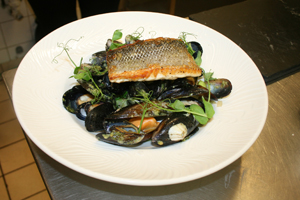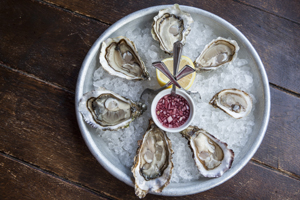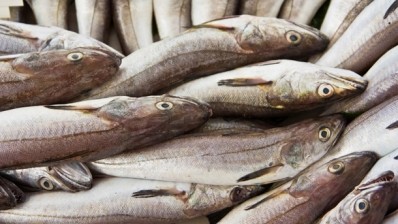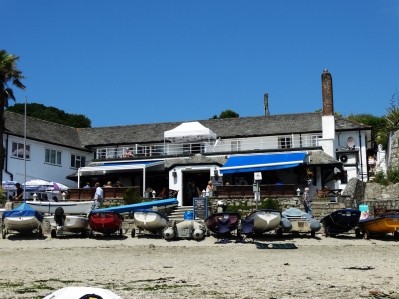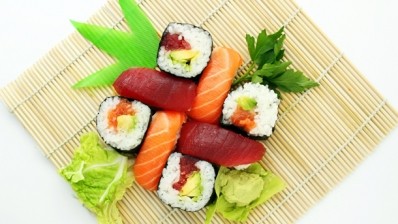How to create a sustainable seafood menu
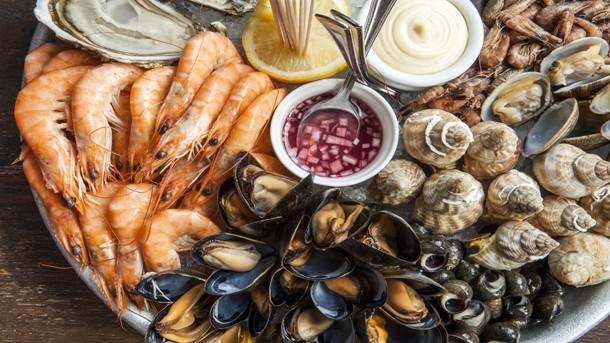
Sustainable sourcing has become a watchword for the restaurant industry over the past few years.
Big name chefs such as Rick Stein, Jamie Oliver and Hugh Fearnley-Whittingstall have all committed to using sustainable species in their restaurants, and the resulting media attention has brought the issue in to the mainstream.
So why is serving sustainable seafood important, and does the hospitality industry need to do more?
According to the United Nations Food and Agriculture Organization, 85 per cent of the world’s fisheries are currently fished up to or beyond their sustainable limit, and around 90 per cent of each of the world’s largest fish species – including cod and swordfish - have been lost since the 1950s,
George Clark, UK commercial manager at the Marine Stewardship Council (MSC) explains: “In simple terms sustainable fishing is taking enough out of the oceans so we can continue to fish for years in to the future, ensuring that stocks aren’t threatened, and that fisherman’s livelihoods are maintained.”
So what can the foodservice sector do to help?
Chef’s responsibility
Michelin chef and restaurateur Nathan Outlaw, who uses his menus to highlight sustainable seafood caught off the Cornish coast, believes the responsibility lies in the kitchen.
“Chefs have a unique opportunity to show customers that lesser known, sustainable seafood can be as delicious to eat as the species customers know,” he says.
“If they don’t take this up, the result will be that in the future those well-known species may not be available. It’s as simple as that.”
MSC research indicates that while 60 per cent of UK consumers believe restaurants should offer sustainable options, only six per cent have seen the relevant eco-labels on menus when eating out.
So why aren’t restaurants doing more?
The answer is mixed. Despite the growing popularity of the MSC’s eco-friendly message, chefs say it is still difficult to encourage diners to make sustainable choices.
“People are brought up on certain types of fish so it can be a challenge to get them to try something different,” says Alan White, executive chef at The Grand Hotel in Brighton.
The concern is that when faced with a choice between a well-known dish and an uncommon, more sustainable species, diners will tend to opt for what’s familiar.
Robin Hancock, co-founder of the Wright Brothers seafood wholesaler and restaurant group, agrees.
“When it comes to seafood and shellfish we are a very conservative nation and it always surprises me how much salmon people eat,” he says.
“As soon as you put something on plates like dab or pouting people aren’t interested.”
So how can chefs encourage people to eat sustainably?
Nathan Outlaw says the key is to effectively trick diners in to trying something new.
“It’s always a challenge to get people to try something different but a good chef should have the palate to taste other species and create something delicious with them,” he says.
“A good way to do this is to incorporate something familiar with something unfamiliar. For instance, a red mullet dish which also uses cuttlefish, or gurnard with a crab sauce.”
White – who creates a daily menu based on the catch of the day off Brighton’s seafront - explained that diners were more likely to sacrifice a familiar choice for something ‘a bit special’.
“If I knew everyone wanted cod and I wanted them to eat pollock, I would buy pollock and add something special to that dish – like a lobster sauce,” he says.
“People would buy it all the time because they’d see quality.”
So what’s the MSC’s response? Clark says he encourages chefs to ‘romanticise’ the fish by emphasising the traceability of its supply chain from sea to plate.
“Talk about the provenance,” he says. “For example there’s a Cornish sardine fishery that is MSC certified, and if chefs can big up its history and importance to the local community it will help romanticise the fish on the customer’s plate, and hopefully encourage them to choose it on a menu.”
Educating front-of-house
At the Wright Brothers restaurant group sustainability is a key part of company’s message - and it’s proving successful. The group just opened its fifth restaurant, an oyster house in South Kensington, and currently supplies oysters to over 150 chefs and restaurants across the UK.
Robin Hancock, one half of the titular Wright brothers, explained that educating front-of-house was key to influencing diners to make sustainable choices.
“That’s the challenge within restaurants – to brief staff on the provenance of the fish so you are able to say to the public ‘this is a beautiful fish, it’s delicious and you won’t be disappointed’,” he says.
“We do it with shellfish and are trying to do it with a lot more species.”
But can it be limiting for chefs to use only a certain number of species deemed sustainable? Hancock disagrees.
"There are masses of really exciting sustainable species like coley and dab and hake, so you can still have fantastic menus,” he says.
“It’s up to the chefs to present those fish in an exciting and tasty way. I don’t think it’s a massive challenge – it’s just experimentation and being bold about what is put on menus."
What to do?
So what’s the first step for chefs who want to start using more sustainable seafood, or even become MSC certified?
“My first advice would be speak to MSC certified suppliers, there are around 260 fisheries certified to MSC standard globally and there are 110-120 different species available,” says Clark.
“Around 12-13 MSC certified species are landed in the UK, but there are lots more available fresh and imported.”
Clark maintains that while trust in suppliers is important, the pressure is on chefs to educate themselves.
“For chefs it’s really about having a good knowledge base on the subject,” he says.
“Without that you are completely reliant on your supplier. Organisations like the Marine Conservation Society (MCS) provide guidance on the sustainability of certain species.
“If you know what red lights to look out for when you’re buying fish then it helps when questioning suppliers or looking to source new species for your menu.
“It’s also about providing a reassurance for customers. If you put sustainability messages on your menu you need to have the knowledge and trust in your suppliers to back it up.”
Need some inspiration? Here's some examples of sustainable dishes.
- Nathan Outlaw, Restaurant Nathan Outlaw: Cuttlefish Fritters in Squid Ink and Red Pepper Sauce; Red Gurnard Soup with Samphire and Orange.
- Alan White, GB1, The Grand Brighton: Fish Curry – selection of south coast fish, gently cooked in Thai spices, jasmine rice, tomato salad, sultana bread and coconut lassi.
- The Wright Brothers restaurant group: Dressed and cooked Oysters with Tempura, Sweet Miso and Bonito Flakes.
